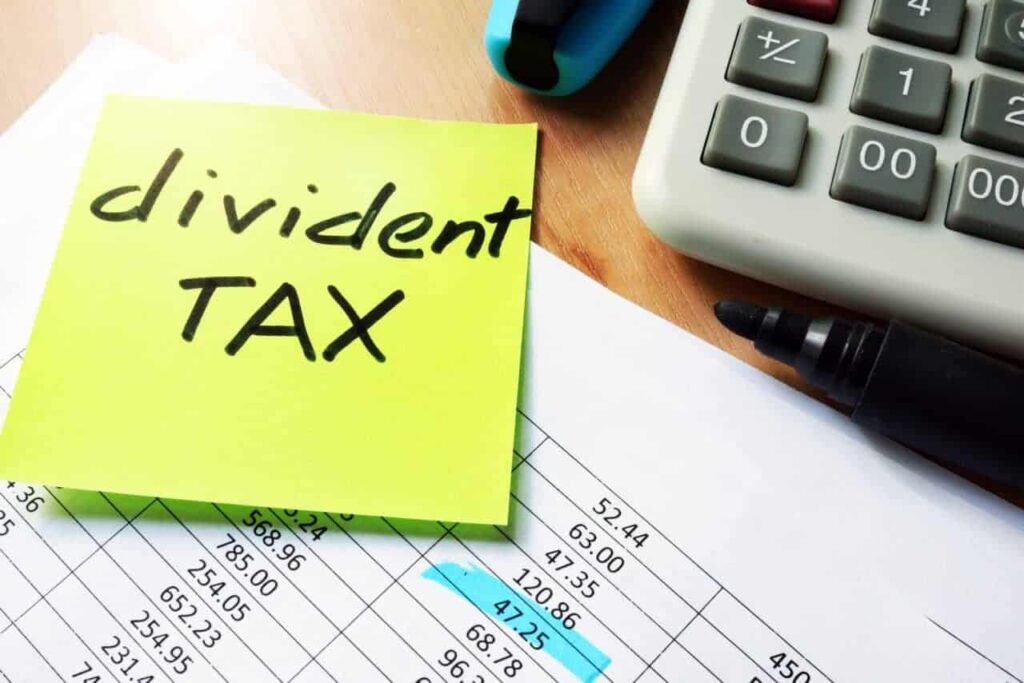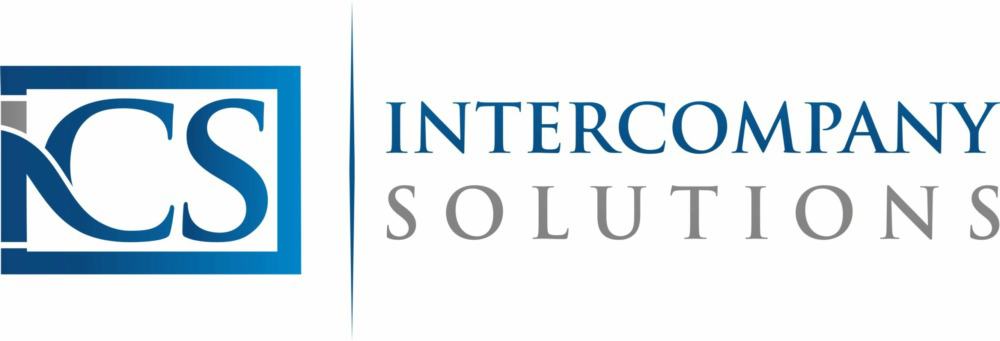
Dividend payments between multiple Dutch BV’s: how does this work?
Updated on 19 February 2024
We often provide starting business owners with specific advice regarding the legal entity they can choose, once they decide to establish a Dutch business. We generally advise opting for a private limited company: in the Netherlands, this is known as a Dutch BV. Owning a BV has multiple benefits, one of the most important being the lack of personal liability when you make debts with your company. It becomes even more interesting, though, when you opt for a holding structure. When you own a holding company with one or multiple underlying operating companies, you enjoy some extra benefits, such as being able to claim certain tax advantages. Next to that, you can effectively spread risks since the actual work is done in the operating company, which holds all the risks.
The operating company is otherwise as 'empty' as possible, meaning that almost all capital is brought into the holding company. Ultimately, you will want to bring the profit that the operating company makes into the holding company as quickly as possible. Also, it is considered beneficial if you are able to receive this profit personally in a short amount of time, which is what this article is all about. In essence, the actual company is driven in the operating company and this is also where the turnover is realized. Once all the costs are deducted, the remaining profit can then be distributed to the holding company. We will outline this process in this article, as well as inform you about the way the distribution of profits works and what taxes are levied. We will also explain the rules when paying dividends, and how much can be paid out. We will also inform you about the legal consequences, when dividends are paid against current Dutch legislation.
Practical explanation of the dividend payment
A dividend is the payment of a portion of profits to a shareholding company, and then to shareholders individually. The main purpose of paying dividends is to attract investors and new shareholders for your business. Dividends can therefore be seen as a reward, for everyone who holds shares in your company for a longer period of time. Publicly traded companies may decide to distribute a portion of the profits to shareholders., but keep in mind that companies are never obliged to pay dividends. Some companies actually never pay dividends, but rather choose to reinvest their profits. This is due to the fact, that you can also earn money as a shareholder by taking advantage of a rising share price. In the sections below, we will explain how dividend is supposed to be paid, and in which ways this can be realized.
Dividend payment between multiple Dutch BV’s in general
If you can pay out dividends within your current company structure, we strongly advise exploring this possibility. Why? Because dividend payments between Dutch BV's are exempt from dividend tax. This is due to the fact, that the participation exemption applies from holding a minimum of 5% of the shares. By assessing your liquidity, solvency and equity, you make it clear how much dividend you can pay to the shareholding company. In a general sense, it is advisable to distribute as many surplus funds as possible to the shareholding company, and to keep the active company ‘empty’ as we explained above. Needless to say, sufficient liquidity must remain available to achieve your business objectives. However, this can also be realized with a loan, provided by the shareholding company. In addition, it is important that, if you are dealing with a credit agreement, you check whether there are specific requirements for certain ratios. A dividend payment usually affects this negatively.
Management fee versus salary
Once you set up a holding BV and place it between you and your operating company, it is often the case that these two BV's conclude a contract with each other. This is also known as a management agreement. This agreement stipulates, that you are not employed by the operating company, but that the holding company rents you out to the operating company. You are therefore indirectly employed by the operating company. This means, that you can either pay yourself salary, or the operating pays a fee to the holding company. The difference between these two options is, that income tax is much higher than the corporate tax rate you will pay over the fee. The highest income tax is currently 49.5%, which you will probably pay if you generate enough profit with your company. Adversely, the current corporate tax rate in the Netherlands is either 19% (for profits up to 200,000 euro) and 25.8% for all profits exceeding this amount.
So if you pay a fee to the holding company via your operating company, it is taxed at the lower corporate tax rate. Do note, that you also have to pay VAT on the management fee (VAT in Dutch is named BTW). The only case in which this does not apply, is when there is a fiscal unity for the purposes of turnover tax. Please note that a fiscal unity is not the same for turnover tax as for corporate income tax. To be able to form a fiscal unity for VAT purposes, more than 50% of the shares of each company must be in the same hands. In addition, some extra conditions apply as well:
- The companies mainly have the same economic objective and each carries out 50% additional activities for the other
- There are overarching positions of leadership
- The companies are independent and established in the Netherlands
So, once all the costs are deducted from the amount of money you have made with your company, you have an amount left that is considered to be profit. Regardless of whether the profit is distributed, corporation tax must be paid on this amount. In order to use the profit, all costs must first be deducted from the turnover. Please note that the word ‘cost’ is a broad concept. Company costs include, among other things, the remuneration on a loan that the Dutch BV takes out (interest), salary to employees, the rent for an office building, all amenities, but also, for example, the management fee that the operating company pays to the holding company. You need to deduct all these numbers to be able to truly speak about profit.
The fiscal unity for corporate income tax
For corporate income tax in the Netherlands, it is also possible to apply for a so-called fiscal unity. The holding company and operating company are then seen as one taxpayer for corporate income tax purposes. This is often used if there are several operating companies under the holding company. This is beneficial in many ways, for example, the profits of one operating company can then be set off against the (start-up) losses of another operating company. This can provide benefits for the final profit distribution. The settlement reduces the taxed profit, and, therefore, the tax to be paid. The conditions for the fiscal unity for corporate income tax purposes are different from the aforementioned conditions for turnover tax. If you want your company to be eligible to create a fiscal unity for corporate income tax, the holding company must do the following:
- Own at least 95% of the shares in the operating company
- Be entitled to at least 95% of the profits and at least 95% of the assets of the operating company
- Have at least 95% voting rights in the operating company
There is also one condition for the operating company, namely that it must be a BV or NV, or a foreign legal form that is comparable to these two legal entities. In general, these are considered private and public limited liability companies. In addition, the holding and operating companies must:
- Use the same financial years
- Use the same profit determinations
- Be physically located in the Netherlands
You need to be absolutely sure that you actually meet all these requirements, otherwise you risk fines from the Dutch Tax Authorities. If you are unsure about certain conditions, please feel free to contact Intercompany Solutions for professional advice on the subject.
Dividend payment from the operating company to the holding company
The dividend payment from the operating company logically ends up in the holding company. The distributed dividend is exempt from dividend tax in connection with the participation exemption, as we already explained above. Oftentimes, the turnover of a holding company consists only of the management fee obtained from the operating company. Sometimes the holding company also owns a business premises or certain intellectual property rights, that are leased to the operating company. The interest or license fee that the holding company receives from the operating company is also taken into account when determining the profit. After deduction of the costs, including the salary of the owner, the taxable profit remains. Before you can proceed to profit distribution to the holding company, you must first pay corporation tax. No dividend tax has to be paid on the distributed profit in connection with the participation exemption. The participation exemption already applies if the holding company holds 5% shares or more in the operating company. The participation exemption basically ensures, that the profit is not taxed twice. The operating company therefore pays corporation tax on the gains, and the profit that remains and is distributed to the holding company is not taxed.
Dividend payment from the holding company to shareholders
Once the holding company has received the profits from the underlying operating company, this profit is then paid out as a dividend to the shareholder(s) of the holding company. At that moment, the dividend tax comes into play. After all, the dividend tax had not yet been paid when profits were distributed from the operating company to the holding company. The holding company must withhold 15% dividend tax on the dividend that is distributed. The shareholder then indicates, in his annual declaration, that a dividend has been received. If you as a shareholder own at least 5% of the shares, the dividend payment will be taxed at a rate of 26.9%. Please note, that the formerly paid 15% will be subtracted from the amount of 26.9% that the shareholder needs to pay, as the 15% dividend tax has already been deducted. So in essence, you pay the remainder of 11.9% privately. If your holding company has a claim on yourself for more than €500,000, you may have to deal with the consequences of the ‘Excessive Borrowing Bill’ in the future. In this case, the timely payment of dividends is a suitable opportunity to (partly) repay the claim.
The main rule is that the general meeting of shareholders is empowered to decide on the profits and on making distributions to the shareholders. It is important that the shareholders can only do so for the part of the equity, that is greater than the reserves that must be held according to the law, and also the articles of association of the company. Once the shareholders have decided that dividends must be paid, the board must approve this. Without approval, no payment can take place. The board only refuses approval if it knows that the distribution will ensure that the company can no longer pay its debts. The board cannot therefore refuse the benefit without good reason.
Regulations concerning dividend payments
The steps we mentioned above are basically the practical steps you need to take, when you consider paying yourself and other shareholders dividend. But there are also Dutch laws and regulations that apply to profit distributions, mainly to ensure this is done correctly and the creditors of the company are protected. We will outline these regulations below, as well as all other things you should inform yourself about to stay within the confines of the law.
Who decides whether dividend can be paid out?
The rules for the payment of dividends are laid down in Article 2:216 of the Dutch Civil Code (BW). This article contains the main rule, that the general meeting of shareholders is competent to decide on the allocation of profits and on the determination of distributions. We already discussed this briefly above. This power can be limited though, for example in the articles of association, or granted to another body, but this is not very common in practice. The profit can be reserved, for example for future investments, or distributed to the shareholders. When you choose to distribute the profit to the shareholders, then the general meeting of shareholders can determine this distribution. The rules apply not only to the determination and distribution of profits, but also to all other distributions from the capital of the operating company.
The use of the balance test
When deciding on whether dividend can be paid out or not, the general meeting of shareholders needs to take into account whether the equity of the Dutch BV exceeds the legal or statutory reserves. This is due to the fact, that dividend should only be paid out when there is actually enough money to do so. In general, any profit distribution needs to be greater than the legal or statutory reserves. It is also the responsibility of the general meeting of shareholders, to check whether this is actually the case and dividend can be paid out. This action is also known as the ‘(limited) balance test’. This test needs to be done every time the general meeting of shareholders decides that profit should be distributed among the shareholders, so both in the case of an interim distribution and a periodical decision. In practice, this test doesn’t have that much significance, though, since most Dutch BV’s have no legal nor statutory reserves. If there even are any reserves at all, these can be turned into capital or cancelled via an amendment in the articles of association. If there are no legal or statutory reserves, the BV can distribute its entire capital by principle, so not just the profit, but also capital paid up on shares and any reserves. Please note that this can only happen, if this decision is justified and approved by the board.
The use of the distribution/liquidity test
Once the general meeting of shareholders has decided that dividends should be paid out, this will need to be approved by the board of directors of the company beforehand. Without their decision to approve, the decision to pay out by the general meeting shall have no effect. In practice, the board of directors generally approves such decisions. The board may only refuse this approval if it knows, or should reasonably be able to foresee, that the BV will no longer be able to meet its payment obligations as a result of the distribution in the foreseeable future. This is the only real basis for refusal of dividend payments. So, if the worst-case scenario is not probable to happen, the board must provide the shareholders with an approval.
The main goal of this mandatory approval is the protection of the company. The board of directors checks whether the distribution is justified and does not endanger the continuity of the BV. This course of action is also known as the distribution or liquidity test. The board is actually very free in determining how it will implement the distribution test, as it is up to the board to decide this. Nonetheless, in practice, often certain standard guidelines are used to make the process more transparent and foreseeable. In order to perform the test, the time of the benefit is used as the reference date. As a general rule, it is assumed that the board, in its assessment, must look about a year ahead from that reference date to make an accurate prognosis regarding the company’s assets and liabilities. However, this one-year period is not considered to be a hard timeframe. For example, a large claim can become due and payable in a year and a half, which will instantly change the entire situation. When this amount will need to be paid, this will lead to a situation in which the company will not have sufficient resources to pay shareholders dividend. This is why the board of directors needs to take such information into account in the liquidity test.
What to do in the case of unjustified dividend payment and any payment problems this may cause?
The two tests we mentioned above exist for a solid reason; namely, keeping your company out of financial trouble. It can happen - and it happens regularly in practice - that a dividend payment is made to the shareholders, but that this distribution has been wrongly approved by the board. If you pay dividends without having the actual money to do so, you can create very risky situations for yourself and potentially even bankruptcy. If it looks after a dividend payment that the BV can no longer meet its payment obligations, then you will have to figure out where exactly it went wrong, and how a decision to pay dividend was made, even if it is now clear that this was not possible to do so. In many cases, either the balance test wasn’t carried out by the general meeting of shareholders, or the liquidity test was not carried out by the board of directors. There is also the possibility that one of the tests was done improperly, or someone falsified the information in the test because they were only following their personal interest. In all such cases, it is of the utmost importance to figure out whether they should have foreseen that this inability to pay would be the result of the benefit that would be paid out. Because when this is the actual case, depending on the specific circumstances of course, they may be personally liable for the shortfall caused by the payment. This situation can have consequences for both the directors and the shareholders. After this, the liability of directors and the liability of shareholders will be examined in turn. It is important that (in principle) there is only liability, if the BV actually gets into financial trouble after the unjustified dividend payment.
It is not always easy for shareholders or directors to determine whether they have to approve the decision to pay out. But on the other hand, they do have a strong responsibility. To be able to avoid liability or discussion about this, our advice is therefore to elaborate any administrative decision to approve in writing. And preferably also to describe well, which principles and figures the board has assumed. Especially if there is any doubt at the time of the decision. If nothing has been put on paper, the directors also have nothing to prove afterwards that they have fulfilled their obligation. But when you take notes and clarify the decision on paper, this might just aid you in escaping liability, when the written statement proves that you could not have foreseen any negative outcomes. Below, we will explain the liability of both shareholders and directors in a bit more detail.
Directors’ liability in the case of an unjustified payment of dividend
The directors who knew, or could reasonably have foreseen at the time of the distribution, that the company would no longer be able to pay its debts, are all privately liable for the shortfall that has arisen. The company itself can actually invoke this liability, due to the fact thatit concerns an internal directors' liability. Not only directors can be held liable: others who have actually determined or co-determined the company's policy can also be held liable in private. The condition is that they have behaved as if they were a director, such as a partner you married under prenuptial agreement as a director, or a titular director. If you can prove, however, that it was not your fault, you will not be held liable, as we already explained above. If your fellow directors make the actual payment while you did not agree with it, you will have to take action. Of course, this needs to be considered on a case-by-case basis. It is highly recommended to engage a lawyer when in doubt. It is important, that you explain to your fellow directors why you feel that no approval can be given and that you demonstrably voted against the decision. This should be recorded in the minutes. The law also stipulates that you also do what you can do in your capacity as a director, in order to prevent the negative consequences of the benefit.
Shareholders’ liability in the case of an unjustified payment of dividend
In principle, shareholders are not liable for any private liability. They only run the risk for the amount for which they bought their shares: after all, the shares can no longer be worth anything. This happens, for example, in the case of bankruptcy. Nevertheless, an exception has been made in the case of the unjustified payment of dividends. The shareholder who received a dividend payment while he or she knew, or should reasonably have foreseen, that payment problems would arise, is also privately liable. This liability applies up to a maximum of the amount he has received in dividends. For example, it might happen that one director has to repay dividends, and the other director does not have to repay dividends. If the directors have already made up the shortfall, the shareholders must pay their received dividends directly to the directors. You should also ask questions, such as whether the shareholders were also aware at the time of their decision that the distribution test was not met. Or in the case that shareholders received a dividend payment, without the board of directors having taken the decision to approve.
Intercompany Solutions can assist you in determining whether dividend payment is beneficial in your case
A holding structure can be very beneficial in connection with the current Dutch tax benefits surrounding private limited companies. Every profit distribution of a Dutch BV is bound by the law and all regulations covering this subject. In the case of non-compliance to these rules, which get the company into financial difficulties afterwards, the directors and possibly also shareholders can he held accountable and liable. To be able to avoid issues about this as much as possible, it is therefore important to act carefully. If you would like to explore whether your company can safely pay out dividends to its shareholders, it is advisable to perform both the balance and the liquidity test. When in doubt, our team of legal experts can assist you in making the most prudent decision. Please feel free to contact us anytime for more detailed information, or a clear quote for our services. We can also aid you in establishing a Dutch BV company, or opening a subsidiary of your already existing company in the Netherlands.
Sources:
Similar Posts:
- Foreign multinational corporations & the Netherlands annual budget
- Tax treaty denounced between the Netherlands and Russia per January the 1st, 2022
- How Developed Countries Collect Taxes on Bitcoin
- Want to innovate in the green energy or clean tech sector? Start your business in the Netherlands
- Excise duty and customs in Netherlands




